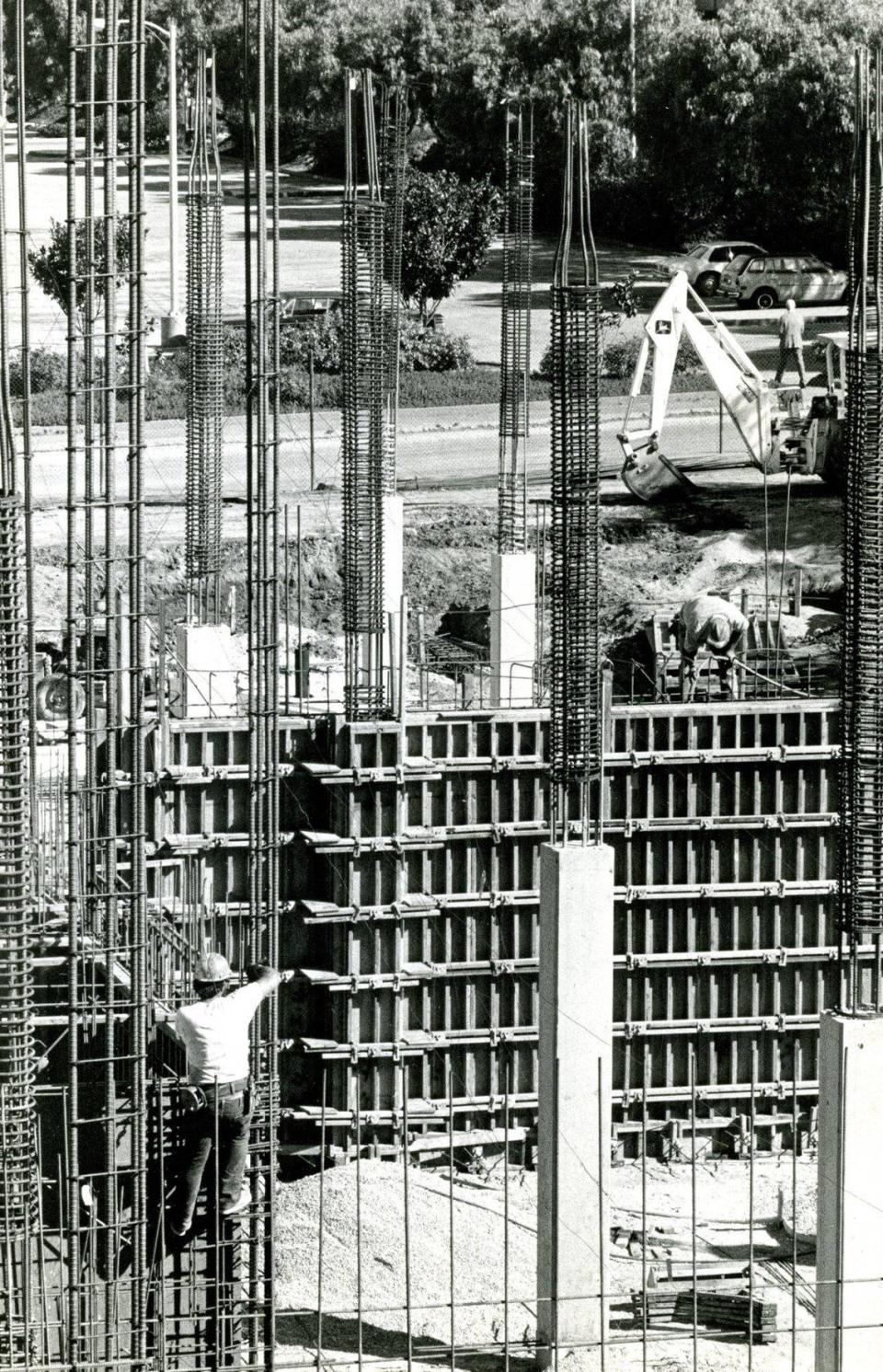Fun fact: Cal Poly did not have a dedicated library building until 46 years after classes were first held on campus in San Luis Obispo in 1903.
Then known as the California Polytechnic School, a three-year secondary school, the future university had a modest start.
Cal Poly’s first library was next door to Cal Poly Director Leroy Anderson’s office in the original 1903 administration building. His secretary doubled as librarian.
In 1916, the library moved to the second floor of the science building later called Anderson Hall.
It was relocated to classroom units near the center of campus in 1939.
The library’s next stop was the second floor of the clock tower building, where it occupied six classrooms. That structure is now known as the Cotchett Education Building.
When the Dexter Library opened in September 1949, it was a $700,000 statement that the college was growing.
The library was named for Walter Friar Dexter, the former state superintendent of public instruction who had helped secure college status for Cal Poly. He died at the age of 59.

When Dexter Library opened, Cal Poly had a total of 2,767 students, almost evenly split between engineering and agriculture fields.
In that era, the buildings had a Spanish-Moorish theme and the library building included a claustrophobic, windowless four-story stack room.
In 1972, Cal Poly officially became a university. The colleges have been reorganized over the years and are now known as Agriculture, Architecture and Environmental Design, Business, Engineering, Liberal Arts, and Science and Mathematics.
The San Luis Obispo university was overdue for an expanded library.
The Robert E. Kennedy Library, named after a Cal Poly president emeritus, opened in January 1981.
Now 42 years later, the Kennedy Library building is undergoing a $77 million renovation project. It closed on Friday and is expected to reopen in fall 2025.
The work includes seismic upgrades, wireless access, roof, fire and alarm systems as well as classrooms and a cafe. Eco-friendly features will include energy-efficient insulation, windows, heating, ventilation and cooling, as well as LED lights.
When the Kennedy Library was under construction, Telegram-Tribune reporter Steve Swenson interviewed then-Library Director Norman Alexander for a story that ran Sept. 28, 1978.
Tragically, Alexander would not live to see the library open. He was murdered before the completion of the building.

Pyramid structures feature of library
The $10.5 million library at Cal Poly will look like a “square doughnut,” for a courtyard will be surrounded by five pyramid-shaped stores when construction is finished in two years, Library Director Norman D. Alexander said.
The library will be named after Cal Poly President Robert E. Kennedy. It was designed by Marquis Associates of San Francisco. It is being built by Robert E. McKee Inc. of Los Angeles.
Construction, which began in the spring is on schedule, building officials said. The building is at Pepper Lane and North Perimeter Road, just north of the existing two story library, which will be converted to classrooms.
Alexander recently was asked by the Telegram-Tribune what the new library would have the old one doesn’t.
“Room,” he replied.
The new library, at 205,000 square feet, will be twice the size of the old one. If it were one story, it would cover 4.7 acres, he said.
Each story will have a covered terrace facing into the landscaped courtyard, he said, and each will be narrower than the one below, giving the building a pyramid shape.
The new facility, expected to open in August 1980, will be able to accommodate 3,000 students, nearly three times more than the old library could handle, Alexander said.
The number of books will also triple from 250,000 in the old library to 750,000 in the new one, he said.
The Kennedy library will house 2.5 million “items,” which will include books, documents, microforms, magazines and historical records.
The library’s special collections of so-called scarce books about the Central Coast, or highly technical subjects will also be expanded, Alexander said, and there will be 250 desks which can be locked so teachers and students may leave their materials in the library.
Checking out books will be like buying merchandise from Sears at the Madonna Road Plaza Shopping Center, he said.
Librarians will use mini-computers similar to the cash registers in a store. While money won’t be charged for the use of the books, a pencil-shaped instrument will be scanned over a sensing tab on the book (similar to a price tag), and the book will be checked out automatically.
The computer will also be able to tell the librarian if the patron has overdue any books.
A record of the amount of times a book has been checked out will be kept by the computer. This will help librarians in ordering more books, Alexander said.
“It gives us complete control,” he said.
